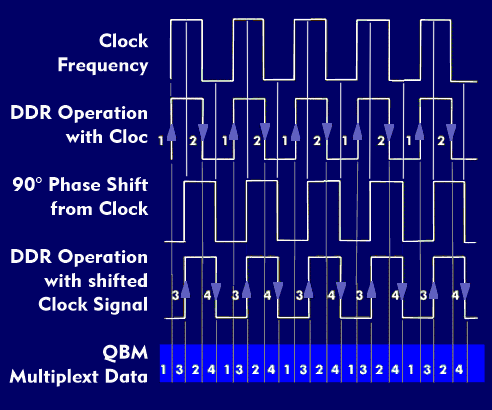quad band memory (QBM)
In order to increase the data transfer rate ofmemory chips, new methods have been developed that use several time points of a clock signal: in addition to DDR technology (Double Data Rate), in which a data transfer takes place on each edge of the clock signal, there is also the QDR method (Quad Data Rate) and the QBM method (Quad Band Memory).
In the QBM method, the rising and falling edges of the clock signal and the center of the pulse roof and the pulse bottom are used as reference points. The latter two reference points are obtained by shifting the phase of the clock frequency by 90°. In principle, the QBM method works with two separate DDR modules whose output signals are multiplexed one after the other. For example, the rising edge reads out data 1 from DDR module 1. This is followed by the middle of the pulse roof where output data 3 is multiplexed from DDR module 2, followed by the falling edge which reads module 1 and multiplexes data 2 to the current, and so on.
Thanks to this method, the data streams of two DDR modules can be combined into one data stream with the same clock frequency via a fast switch.

